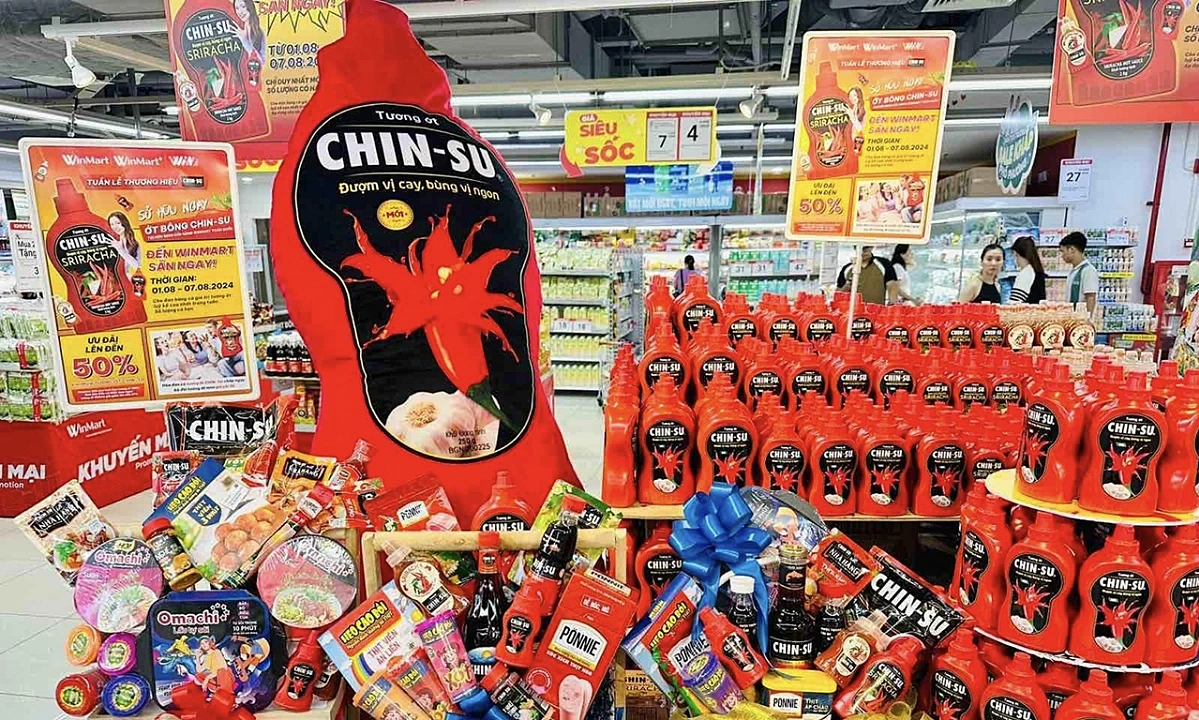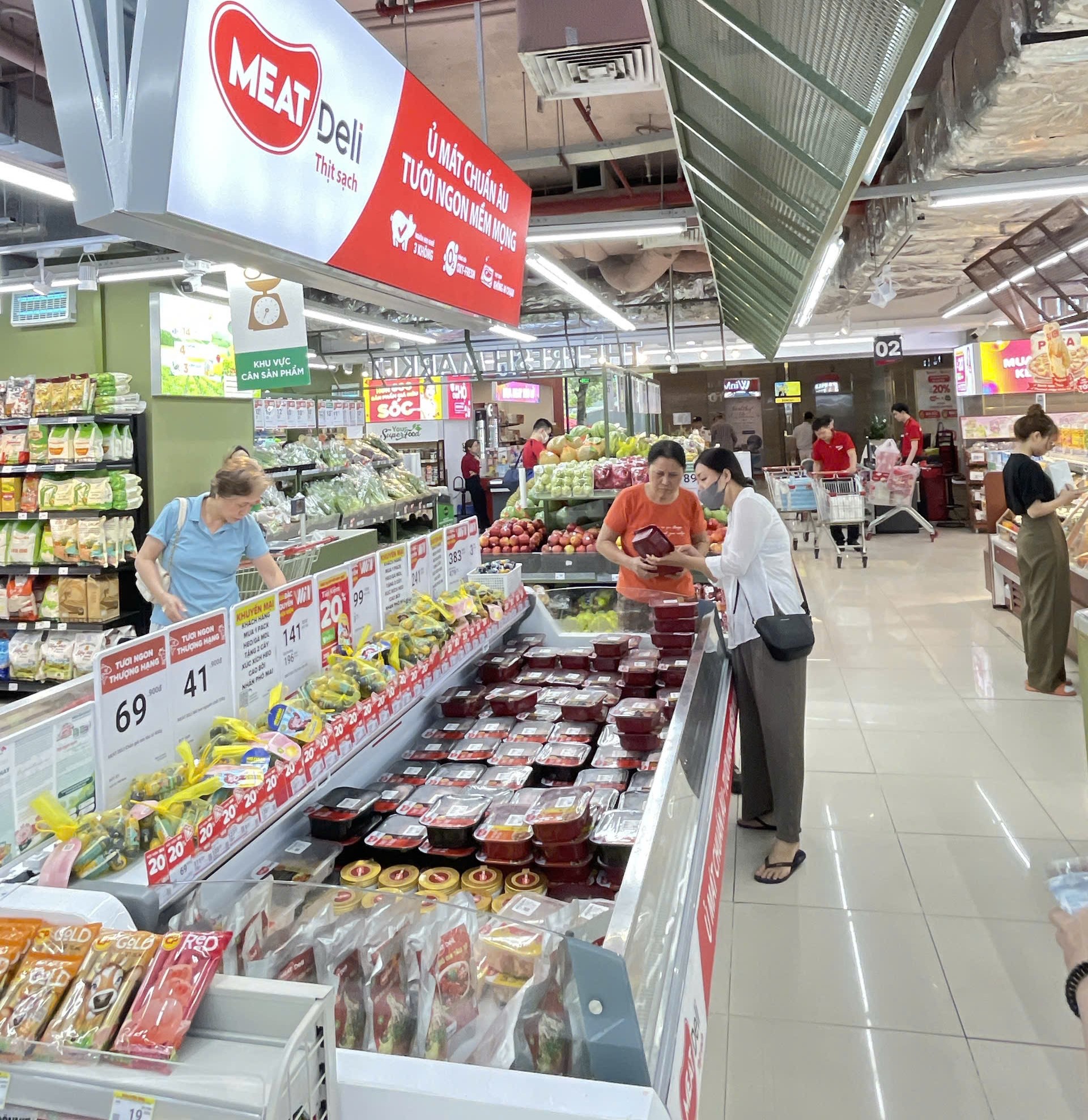In the first half of the year, MCH's revenue reached 13,764 billion VND with a post-tax profit of 2,961 billion VND. Both figures declined compared to the same period last year, influenced by the traditional trade channel and internal strategic adjustments.
Despite this downward trend, export revenue in the second quarter reached 716 billion VND, a surge of over 35% compared to the same period in 2024 (529 billion VND). This growth was driven by increased presence in Asian markets like South Korea and Japan. Products with Vietnamese flavors are gaining popularity among international consumers, expanding the platform for the company's "Go Global" strategy. According to the company, this growth provides supplemental revenue and demonstrates Masan Consumer's competitiveness in promoting Vietnamese culinary culture internationally.
 |
Popular products. Photo: Masan |
Popular products. Photo: Masan
Along with expanding into international markets, the company is also focused on enhancing product quality to meet stringent standards. All of the company's factories maintain international certifications for quality management and food safety, including: FSSC 22000, ISO 22000, HACCP, BRCGS, and HALAL.
To further ensure product quality, Masan Consumer has tightened control over input materials. The company requires suppliers to have certifications for origin, food safety and hygiene, and adherence to environmental and social regulations within the supply chain. A system of quality assessment and inspection is continuously implemented, from raw materials and production processes to finished products, ensuring products meet export standards and maintain consumer trust both domestically and internationally.
In 2023, the company established the Consumer Innovation Center (CIC), with a consumer-centric approach to product innovation. Through the "Consumer-In-Love" model, the company proactively interacts with consumers to understand their needs, especially regarding health, safety, and sustainability.
MCH also collaborates with reputable market research organizations to track emerging trends like sustainable consumption and healthy lifestyles, thereby developing quality, safe products with long-term value for the community. This contributes to the competitiveness of Masan Consumer's products in demanding international markets.
 |
Consumers purchasing the company's products. Photo: Masan |
Consumers purchasing the company's products. Photo: Masan
Domestically, the company is adapting to market fluctuations as the traditional general trade (GT) channel is impacted by tax policies and consumer sentiment. The company is accelerating the restructuring of its distribution channels, shifting to a direct model and leveraging the WinCommerce retail ecosystem to expand its reach. In Q2 2025, revenue from modern trade channels increased by 5.7%, and HORECA (hotels, restaurants, and catering) by 34.2%, demonstrating the effectiveness of this new strategy.
Furthermore, MCH continues to optimize its supply chain at points of sale, including inventory control, promotion optimization, and implementation of modern sales management technology. The company aims to reduce the revenue share of the GT channel from large traditional retailers to 30% in the near future (compared to 60% in the first six months of 2025), to build a more sustainable, flexible, and proactive distribution platform.
 |
The company's chilled meat production line. Photo: Masan |
The company's chilled meat production line. Photo: Masan
According to a company representative, while the domestic market still faces challenges, the positive export results are a significant signal of the strength of Vietnamese brands. Products like Chin-Su Pho Story, the Spices & Herbs seasoning set, and Chin-Su chili sauce are not only popular in Vietnam but have also become representative of Vietnamese cuisine in the international market.
In the latter half of this year, Masan Consumer aims to further expand its export reach while maintaining its premium product strategy and optimizing domestic distribution channels. Through this, the company expects to build a solid growth platform, strengthen domestic market share, and enhance the standing of Vietnamese brands.
Amidst the fluctuations in global trade in 2025, Vietnam's agricultural, forestry, and fishery product (AFFP) exports, including processed foods, continue to grow. According to data from the Ministry of Agriculture and Environment, the total export value of the AFFP sector reached approximately 33.8 billion USD in the first six months of the year, a 15-16% year-on-year increase, with a trade surplus of about 9.8 billion USD.
Despite facing stringent quality control requirements, increased tariffs in major markets like the US and China, and competitive pressure from other exporting countries, the industry is leveraging free trade agreements to expand its markets. Products like coffee, cashews, pepper, and processed seafood continue to make positive contributions, while also opening up opportunities to penetrate deeper into markets with high standards such as the EU, the US, South Korea, and Japan.
Hoang Dan












